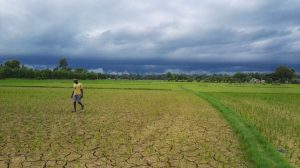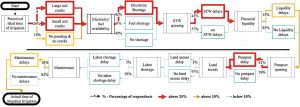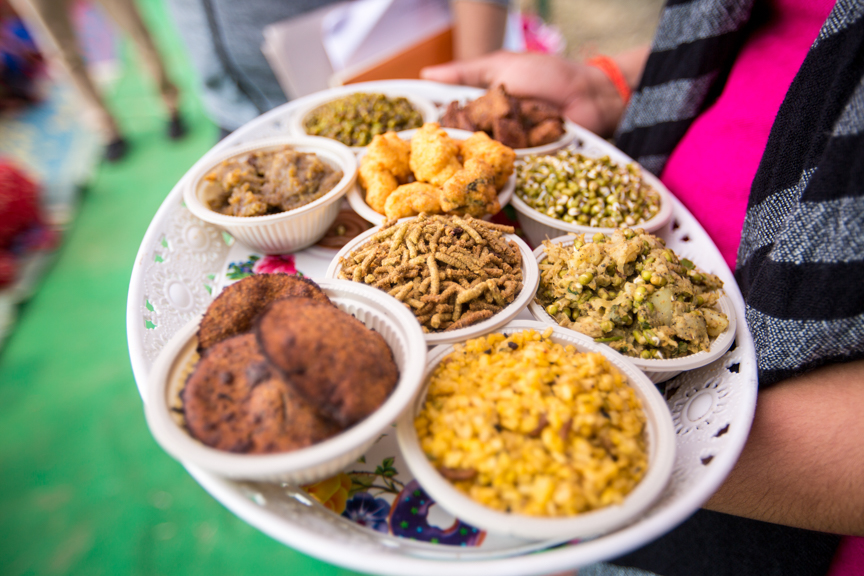
Researchers from the Cereal Systems Initiative for South Asia (CSISA) project have been exploring the drivers of smallholder farmers’ underuse of groundwater wells to combat in-season drought during the monsoon rice season in Nepal’s breadbasket — the Terai region.
Their study, published in Water International, finds that several barriers inhibit full use of groundwater irrigation infrastructure.
Inconsistent rainfall has repeatedly damaged paddy crops in Nepal over the last years, even though most agricultural lands are equipped with groundwater wells. This has contributed to missed national policy targets of food self-sufficiency and slow growth in cereal productivity.
A key issue is farmers’ tendency to schedule irrigation very late in an effort to save their crops when in-season drought occurs. By this time, rice crops have already been damaged by lack of water and yields will be decreased. High irrigation costs, especially due to pumping equipment rental rates, are a major factor of this aversion to investment. Private irrigation is also a relatively new technology for many farmers making water use decisions.
After farmers decide to irrigate, queuing for pumpsets, tubewells, and repairs and maintenance further increases irrigation delays. Some villages have only a handful of pumpsets or tubewells shared between all households, so it can take up to two weeks for everybody to irrigate.
To address these issues, CSISA provides suggestions for three support pathways to support farmers in combatting monsoon season drought:
1. Raise awareness of the importance of timely irrigation
To avoid yield penalties and improve operational efficiency through better-matched pumpsets, CSISA has raised awareness through agricultural FM radio broadcasts on the strong relationship between water stress and yield penalties. Messages highlight the role of the plough pan in keeping infiltration rates low and encouraging farmers to improve irrigation scheduling. Anecdotal evidence suggests that improved pump selection may decrease irrigation costs by up to 50%, and CSISA has initiated follow-up studies to develop recommendations for farmers.
Social interaction is necessary for purchasing fuel, transporting and installing pumps, or sharing irrigation equipment. These activities pose risks of COVID-19 exposure and transmission and therefore require farmers to follow increased safety and hygiene practices, which may cause further delays to irrigation. Raising awareness about the importance of timely irrigation therefore needs to go hand in hand with the promotion of safe and hygienic irrigation practices. This information has been streamlined into CSISA’s ongoing partnerships and FM broadcasts.
2. Improve community-level water markets through increased focus on drought preparedness and overcoming financial constraints
Farmers can save time by taking an anticipatory approach to the terms and conditions of rentals, instead of negotiating them when cracks in the soil are already large. Many farmers reported that pump owners are reluctant to rent out pumpsets if renters cannot pay up front. Given the seasonality of cash flows in agriculture, pro-poor and low interest credit provisions are likely to further smoothen community-level water markets.

3. Prioritize regional investment
The study shows that delay factors differ across districts and that selectively targeted interventions will be most useful to provide high returns to investments. For example, farmers in Kailali reported that land access issues — due to use of large bullock carts to transport pumpsets — and fuel shortages constitute a barrier for 10% and 39% of the farmers, while in Rupandehi, maintenance and tubewell availability were reported to be of greater importance.
As drought is increasingly threatening paddy production in Nepal’s Terai region, CSISA’s research shows that several support pathways exist to support farmers in combatting droughts. Sustainable water use can only be brought up to a scale where it benefits most farmers if all available tools including electrification, solar pumps and improved water level monitoring are deployed to provide benefits to a wide range of farmers.
Read the study:
Drivers of groundwater utilization in water-limited rice production systems in Nepal
 Capacity development
Capacity development 

